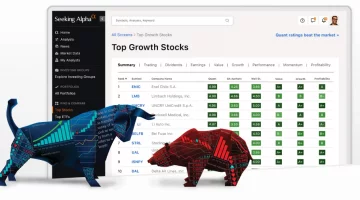Say these five words out loud real fast: Bifurcation, Backwardation, ZIRP, NIRP, Contango.
Did you do it?
If so, did you sound like a cheerleader chanting some foreign language?
These are actual words used by many traders, gurus, and Wall Street promoters.
They may sound funny or confusing but they serve several purposes. (1) They reveal or describe certain market conditions. (2) They act as "signals" for trading purposes. (3) They're meant to confuse and/or impress you.
And they're only a few of the many words, acronyms, and sayings that make up Wall Street's "Secret Language."
Funny thing is, most people (myself included) aren't impressed with words that don't make sense.
However, if you have a basic understanding of them, you'll be better equipped as an investor and more likely to stay ahead of the crowd. Think of it as learning how to "connect the dots" of a financial puzzle.
Compare this with trying to run a business in a foreign language (German, French, Japanese, Greek, etc.). If you don't understand the language, you'll most likely lose money... a LOT of money.
So, like learning any language, you need a good teacher or translator that makes it simple and easy to understand.
That's where we come in.
In this article we're going to feature a few words so you can see how easy it is to learn the language and, at the same time, realize how Wall Street makes things so confusing.
Let's start with ZIRP. It's an acronym meaning "Zero Interest Rate Policy."
It was initiated after the 2008 meltdown to "supposedly" stimulate the economy. The truth is ZIRP has caused critical damage to most of the nations Pension Plans. (They need interest rates to be high in order for them to fund their plans for their pensioners.) ZIRP has also crippled most senior citizens who depend on the interest from their investments to live.
Even though rates are slowly going up, it's going to take a long time to unwind the damage done by ZIRP.
But, let's move on to NIRP. It's another acronym meaning "Negative Interest Rate Policy." Yes, you read that right. NEGATIVE Interest Rate Policy.
It's more collateral damage from the 2008 meltdown and has been in effect mostly in European countries.
Here's the crazy part. When a country's government bonds have negative interest rates (currently -0.05% up to -0.36% or higher) investors have to PAY THEM to hold their money.
It's a losing proposition for the investor and it's hard to imagine anyone buying bonds with negative rates but millions have been sold.
We've only scratched the surface here but hopefully you see how these acronyms are very confusing and misleading.








